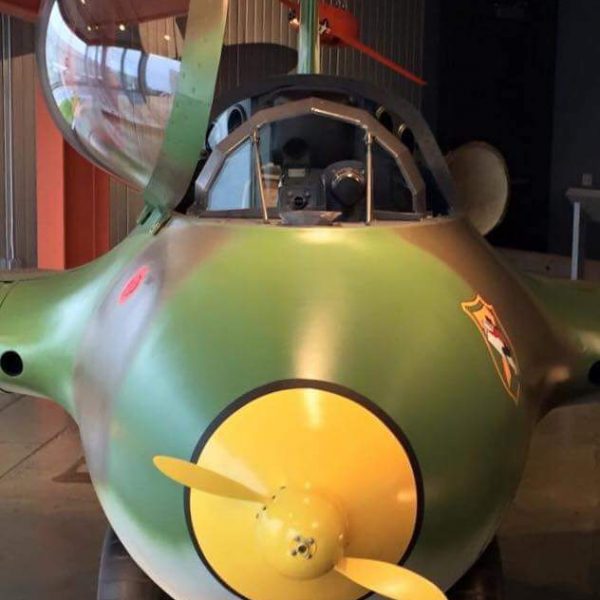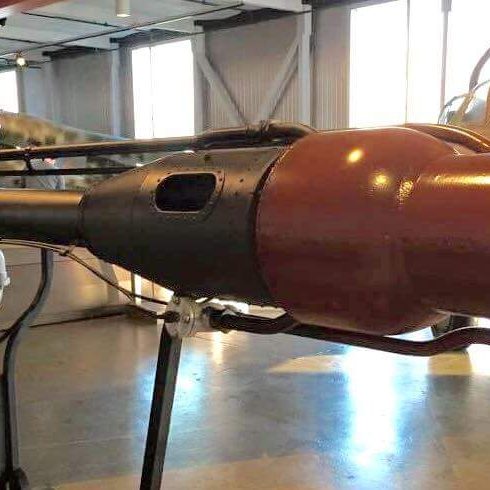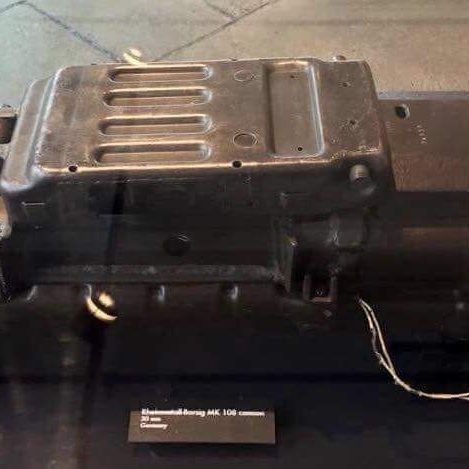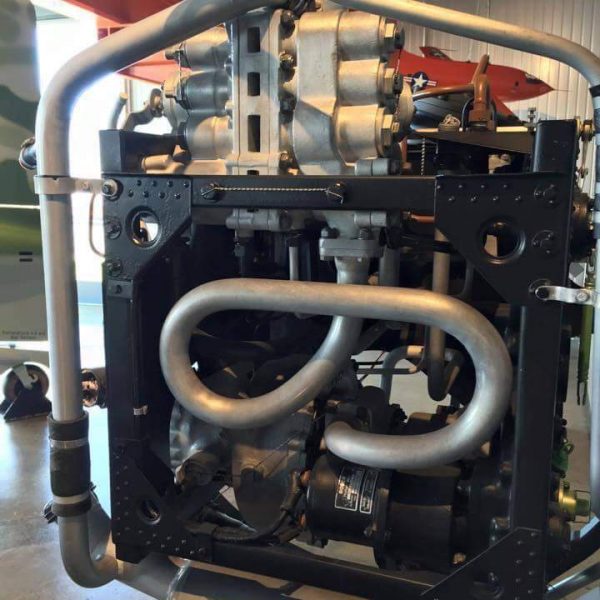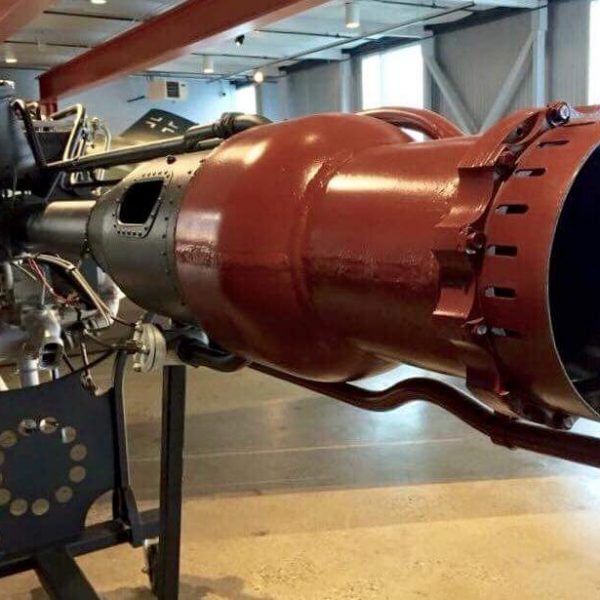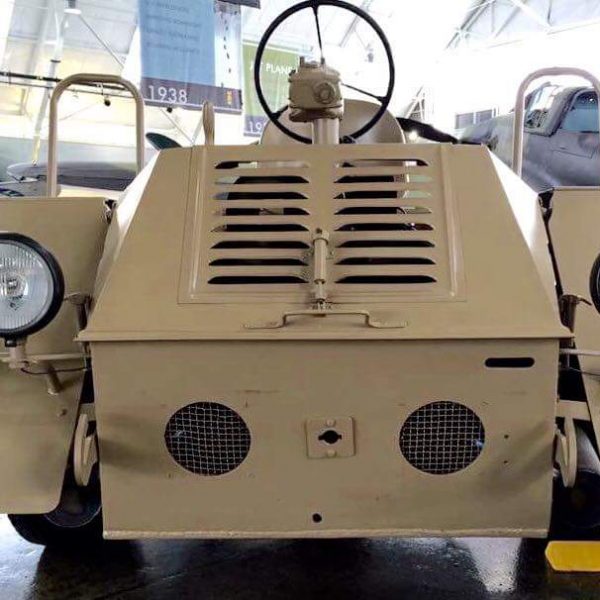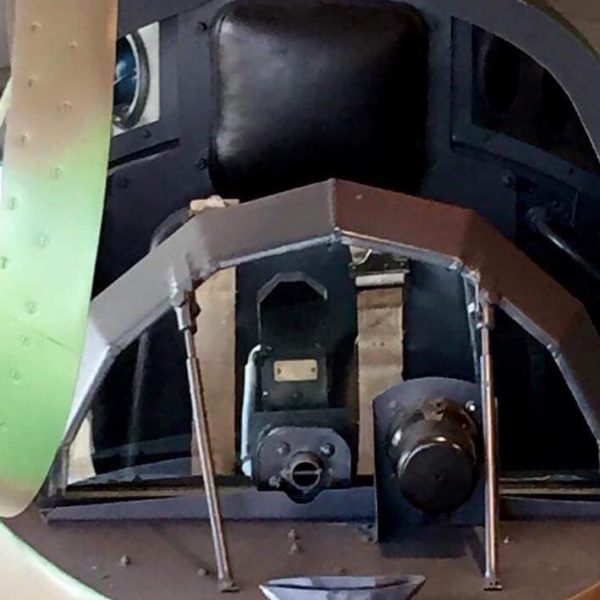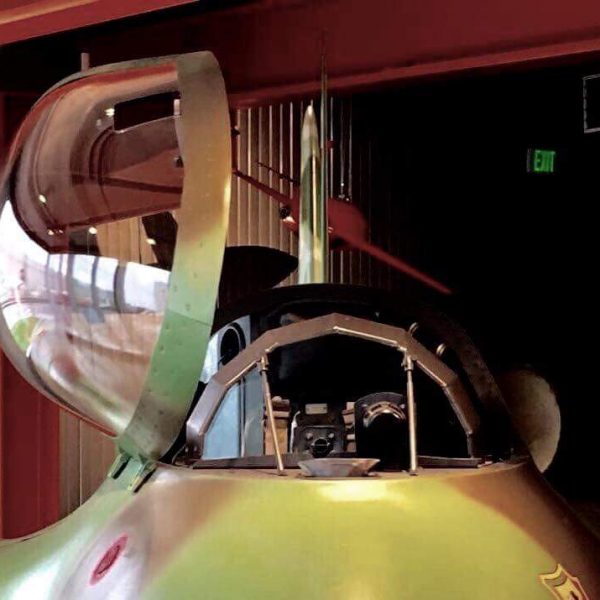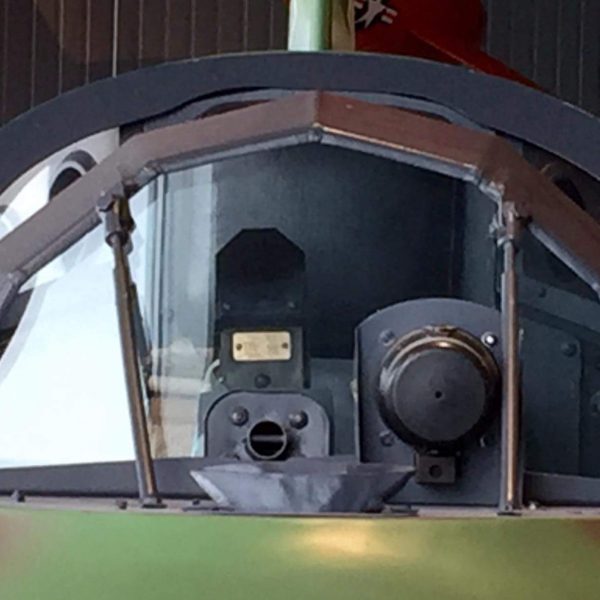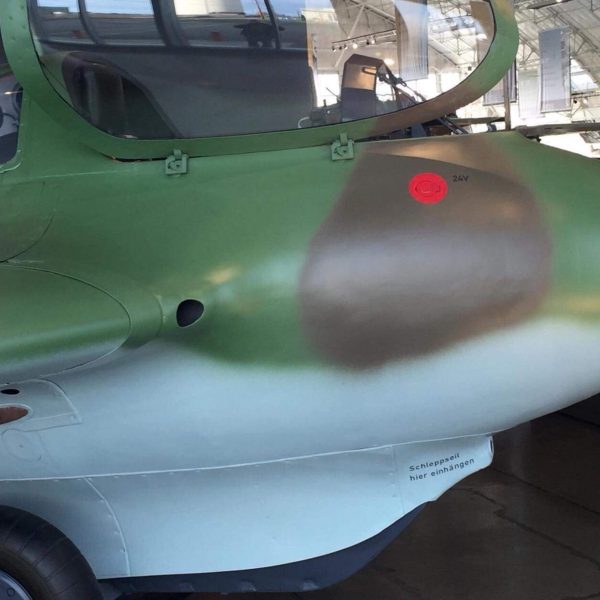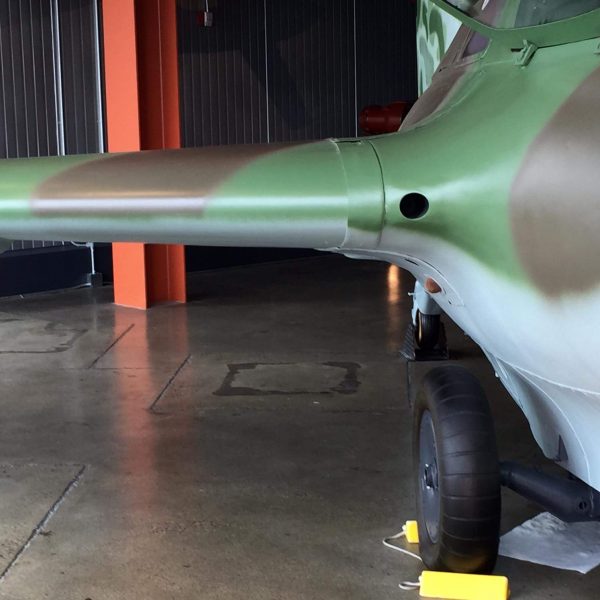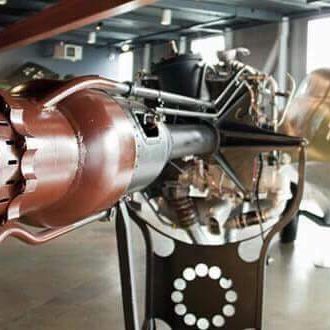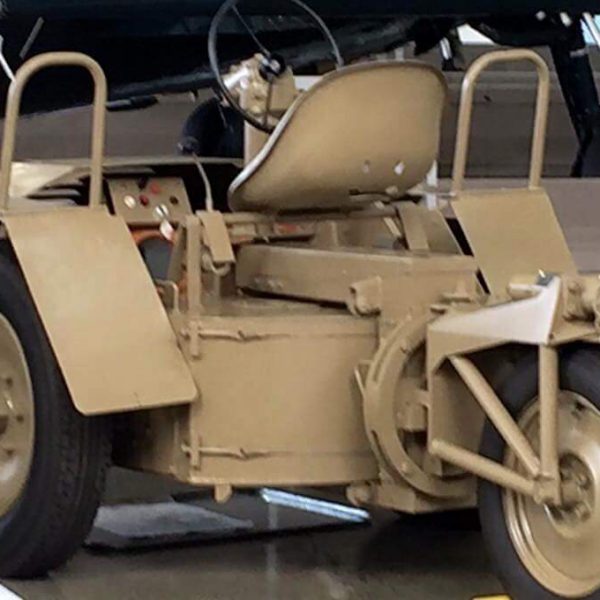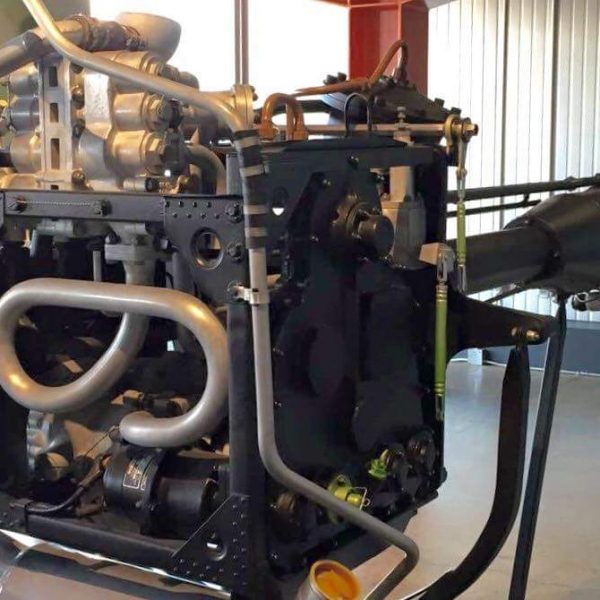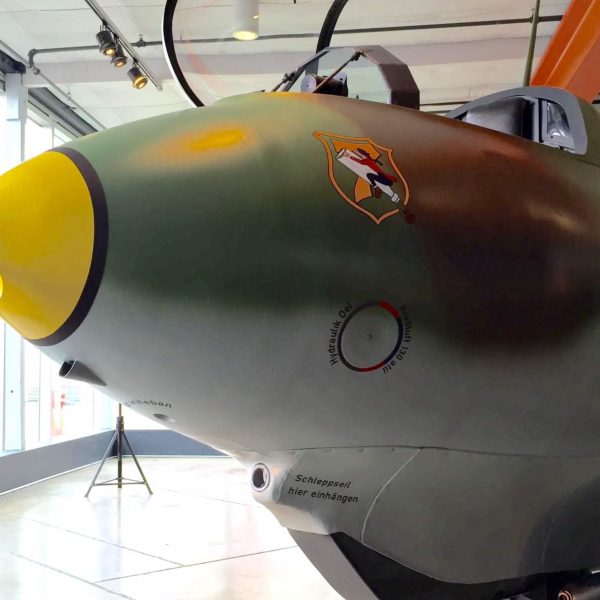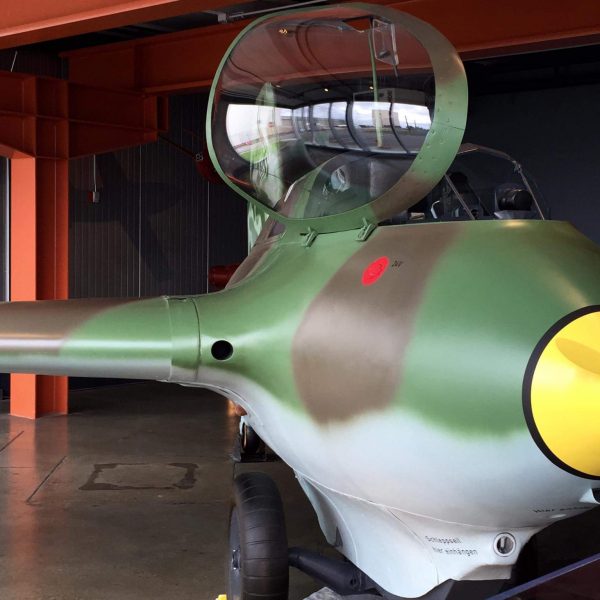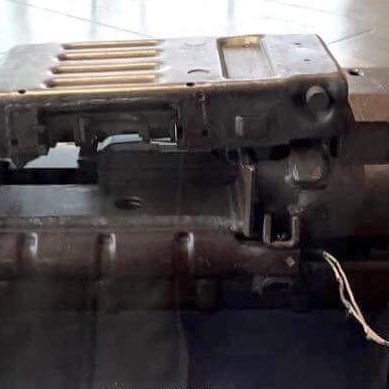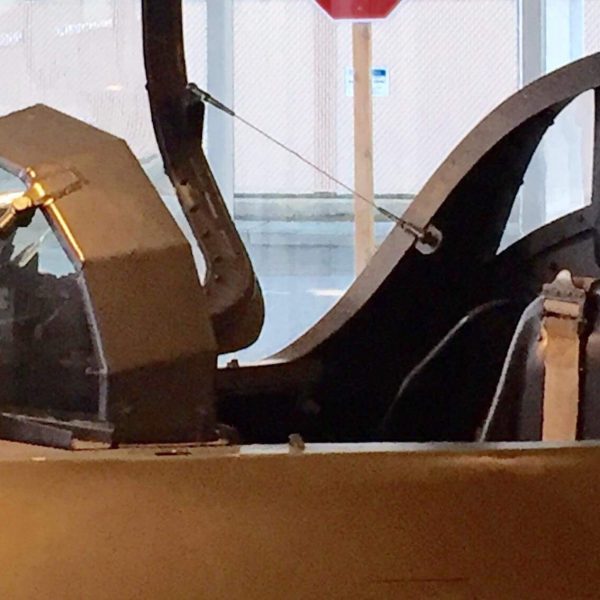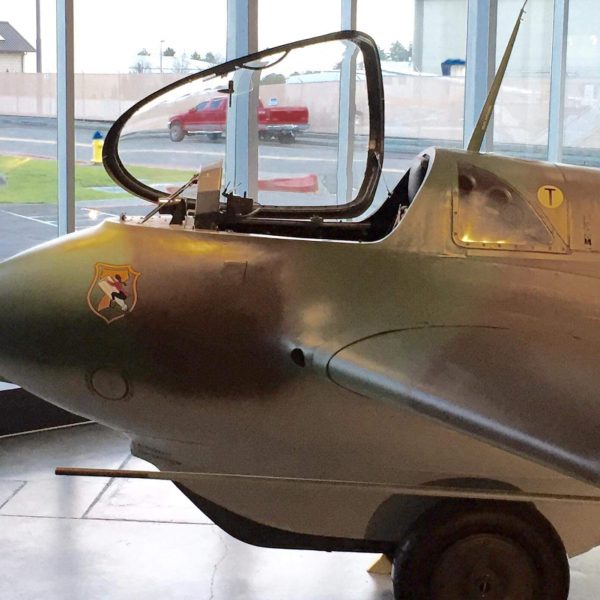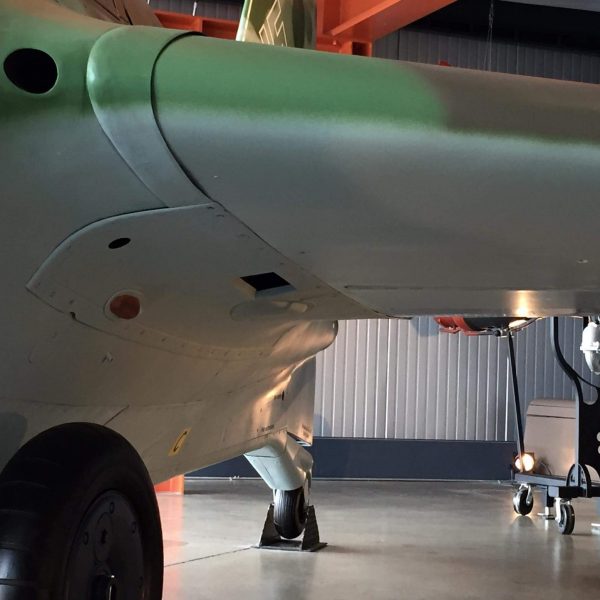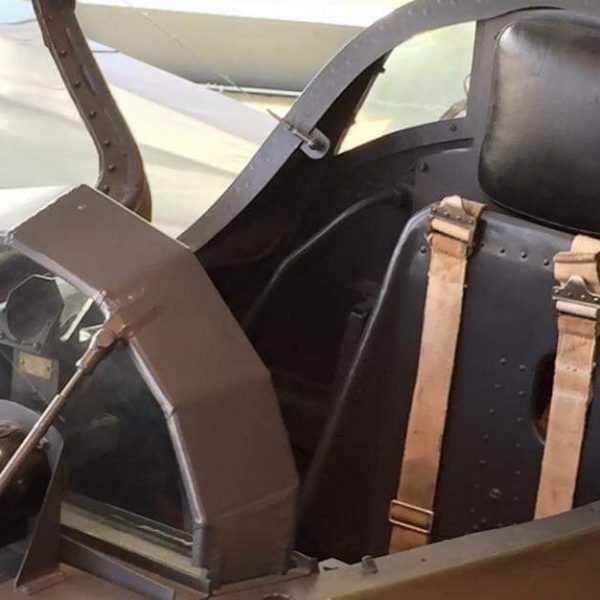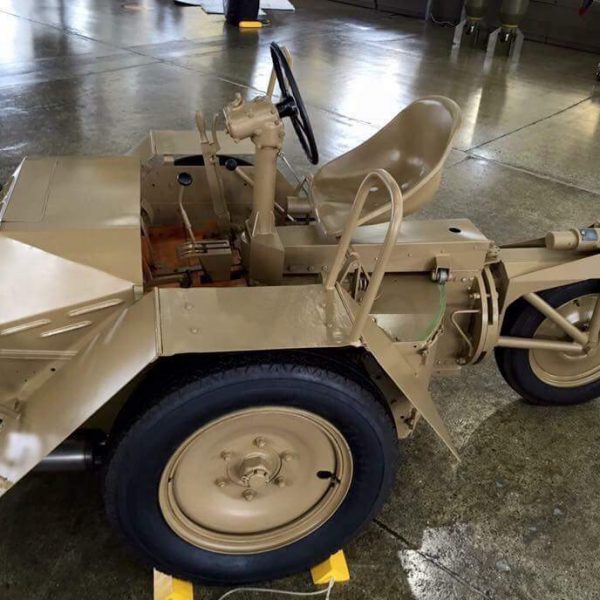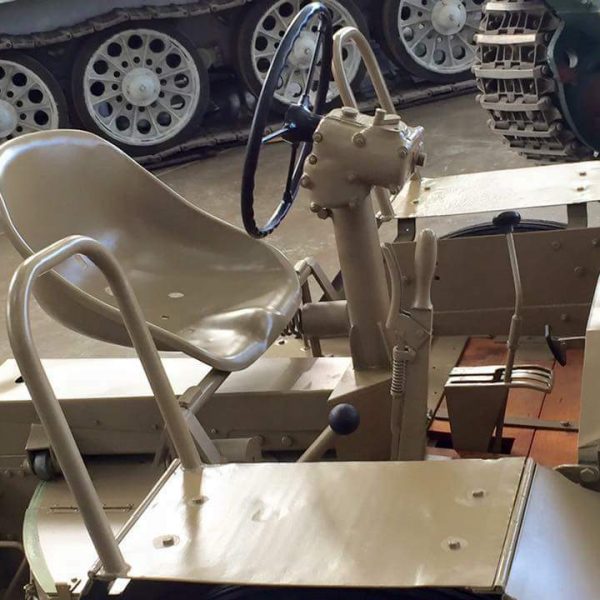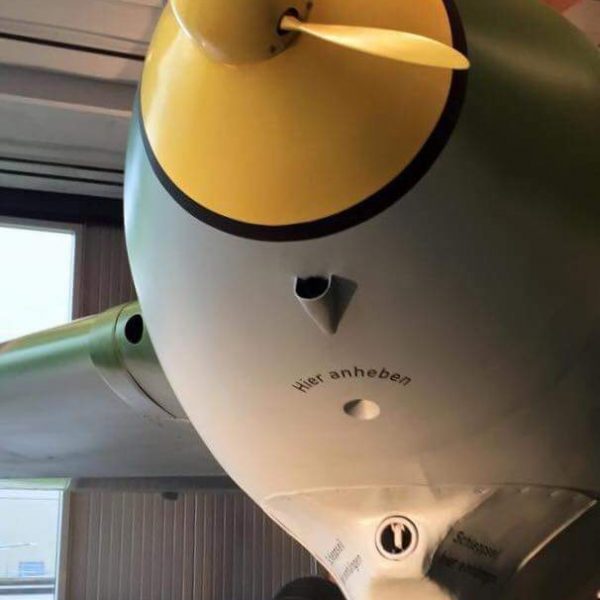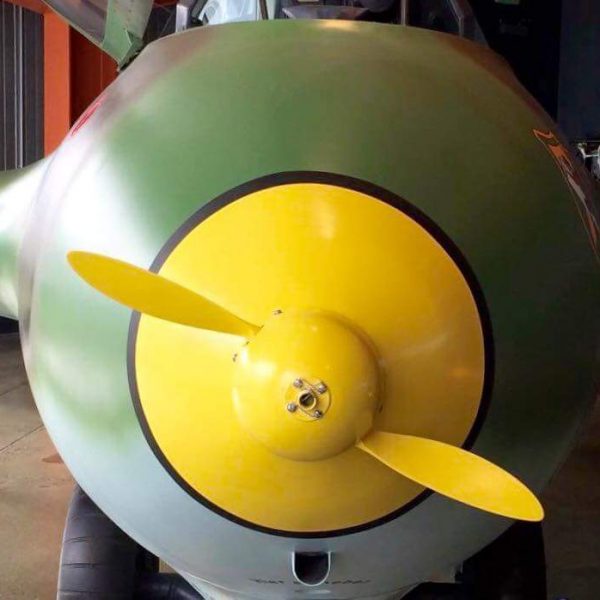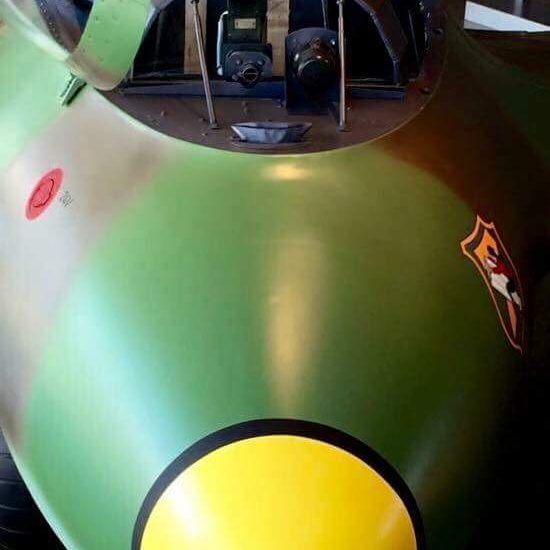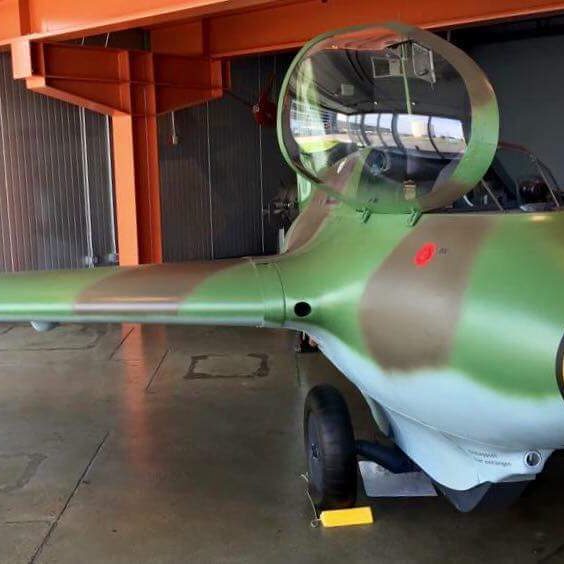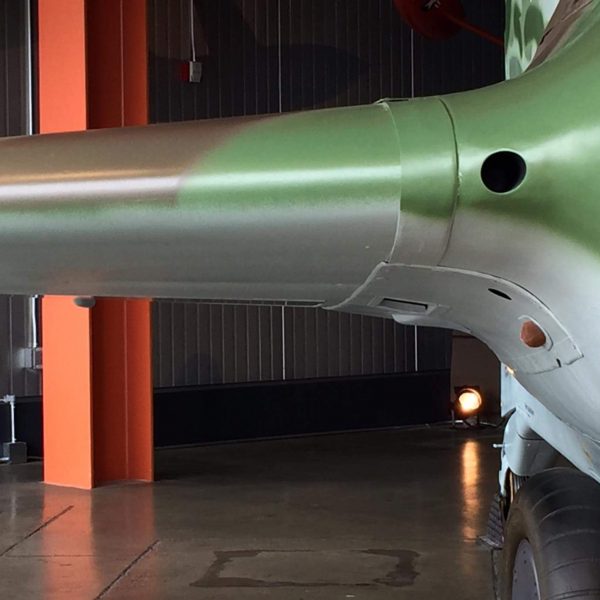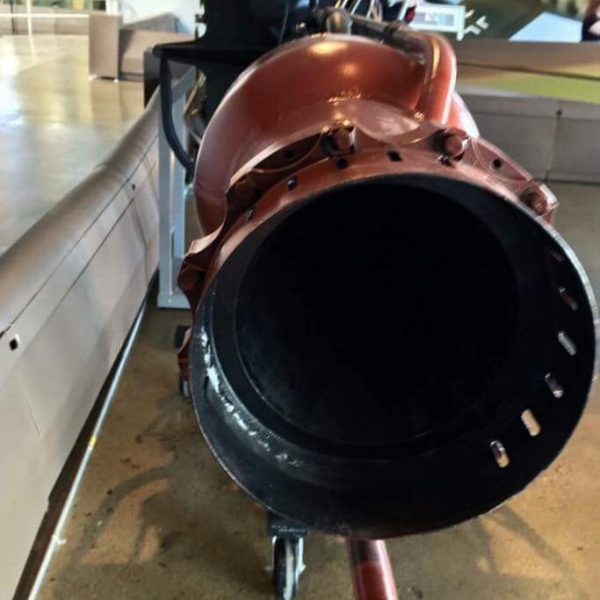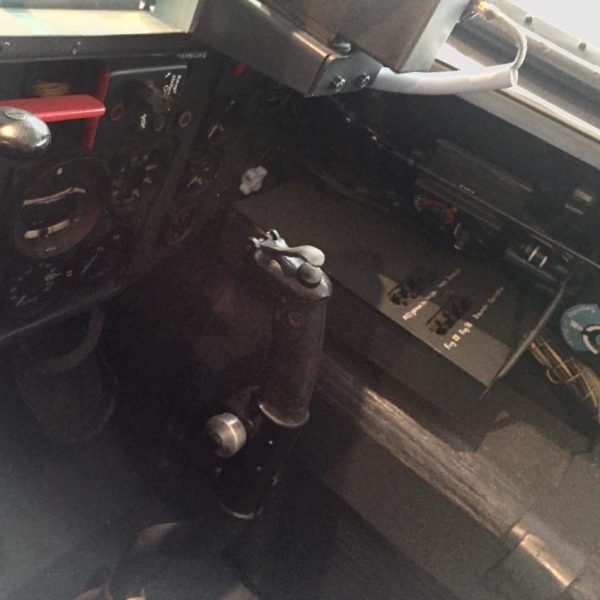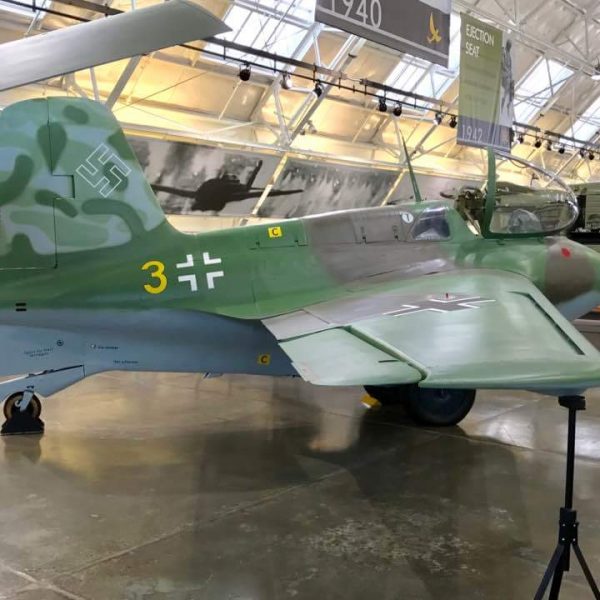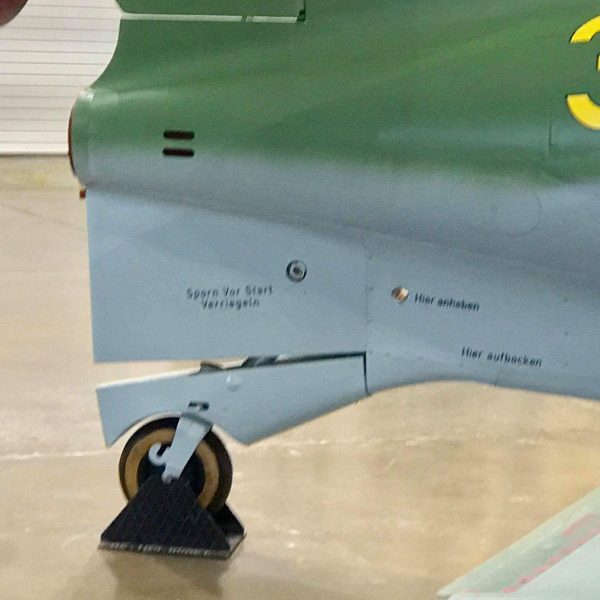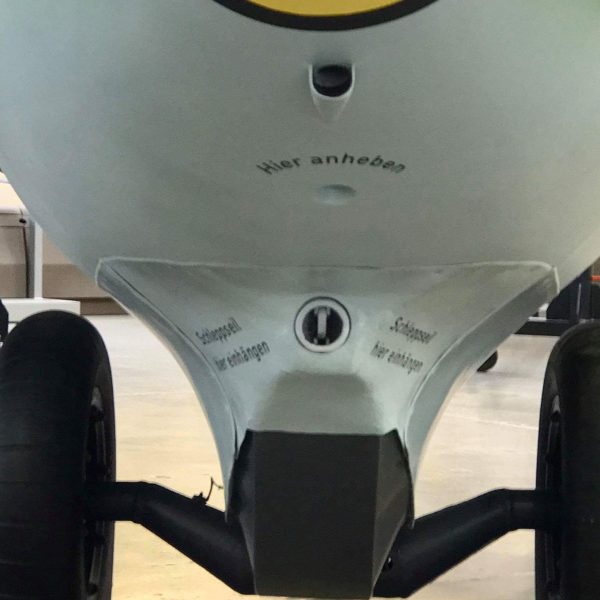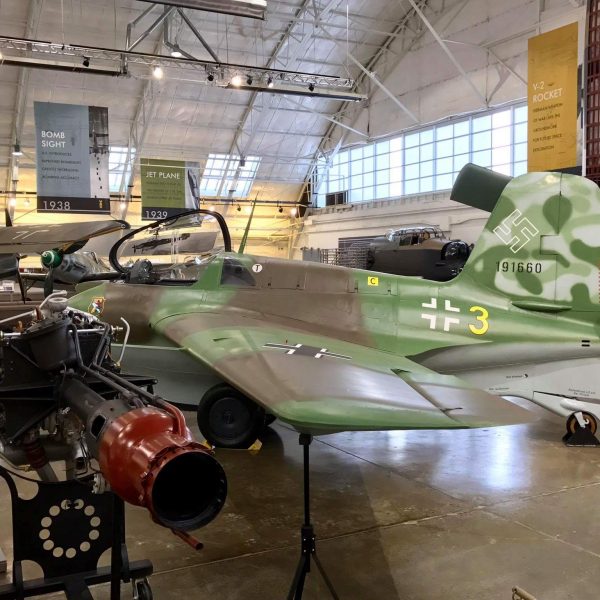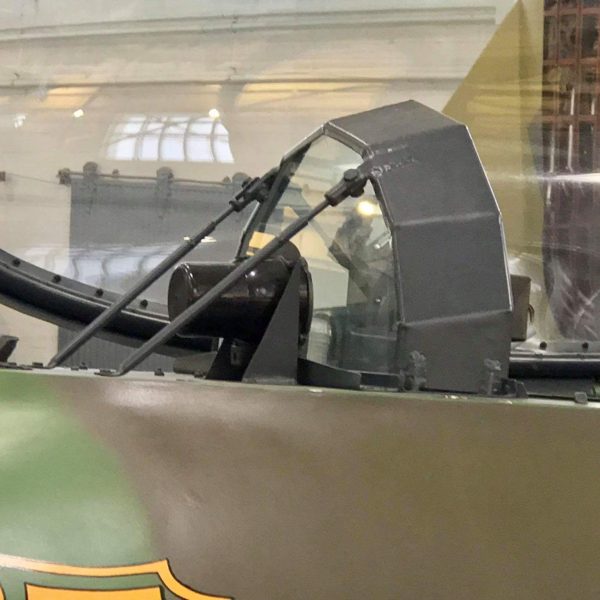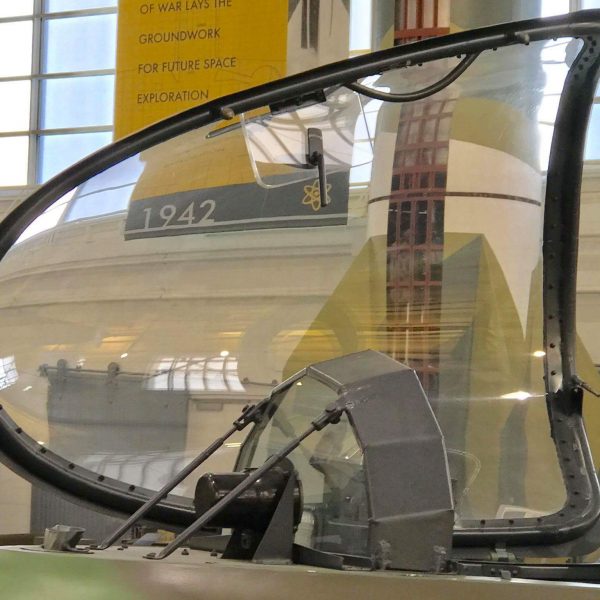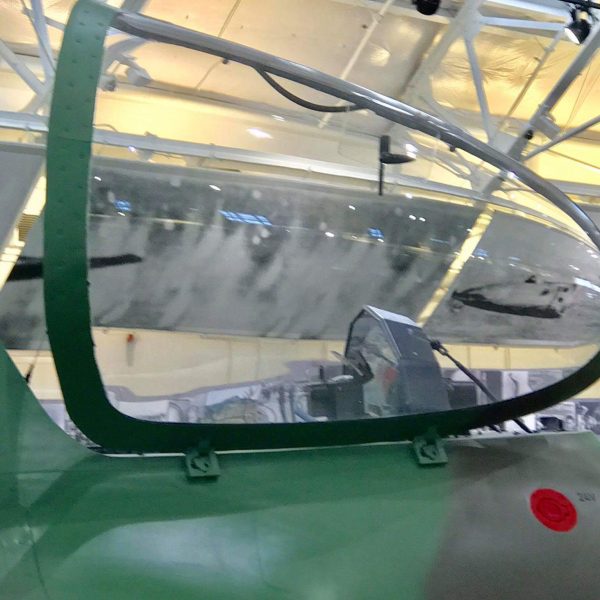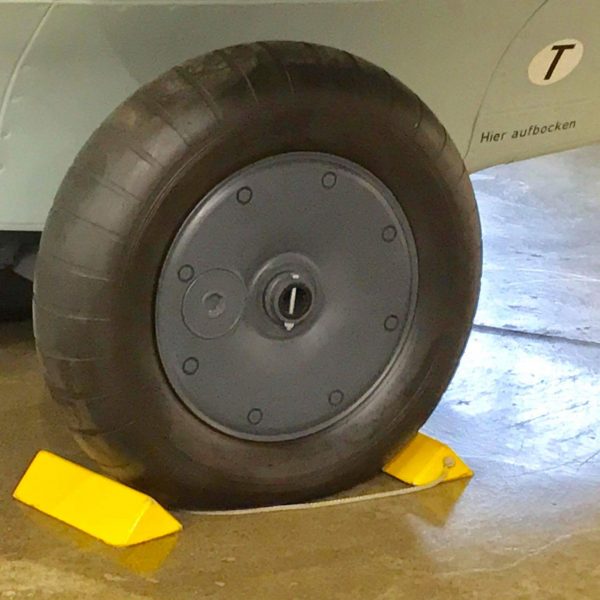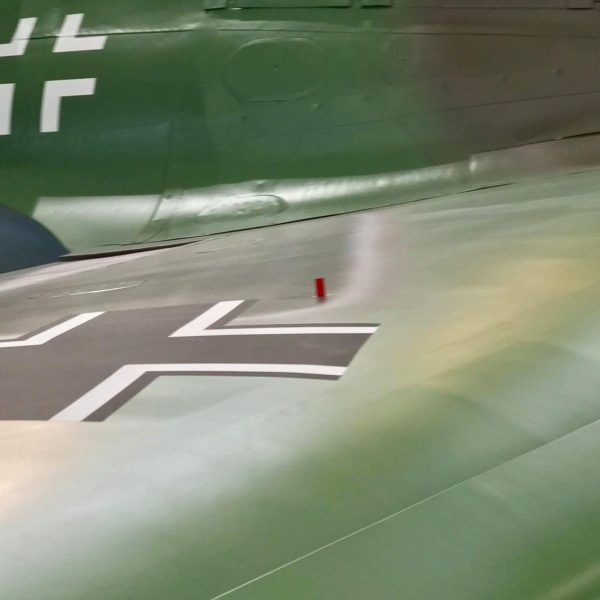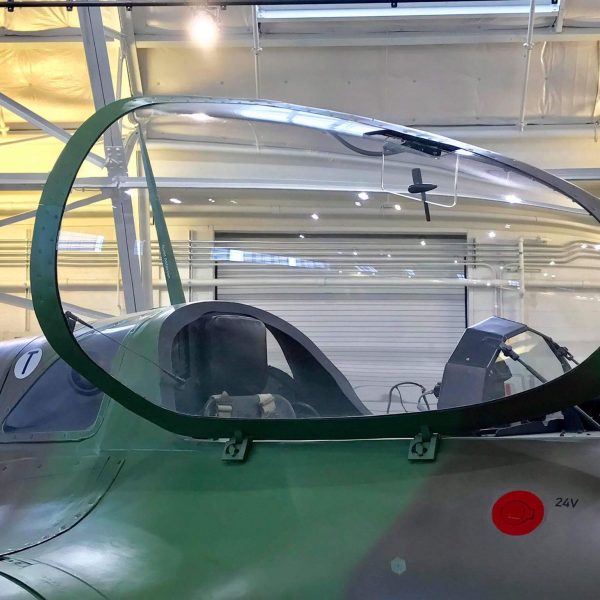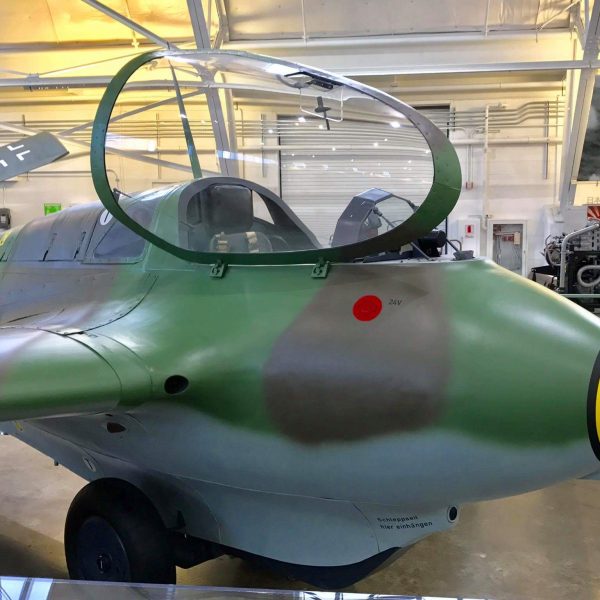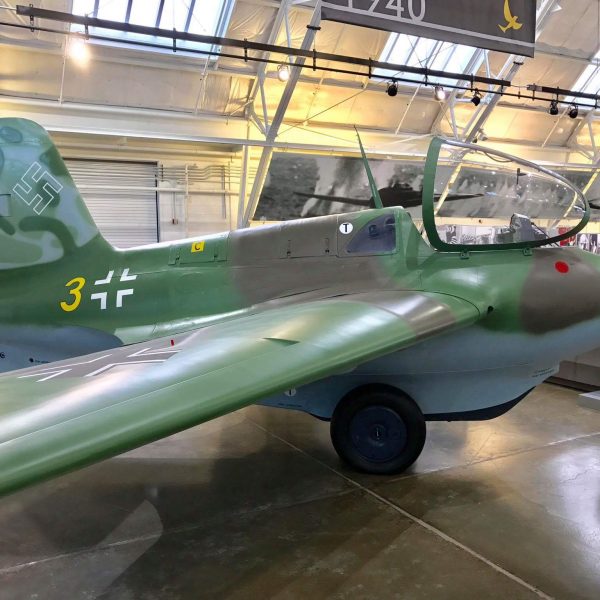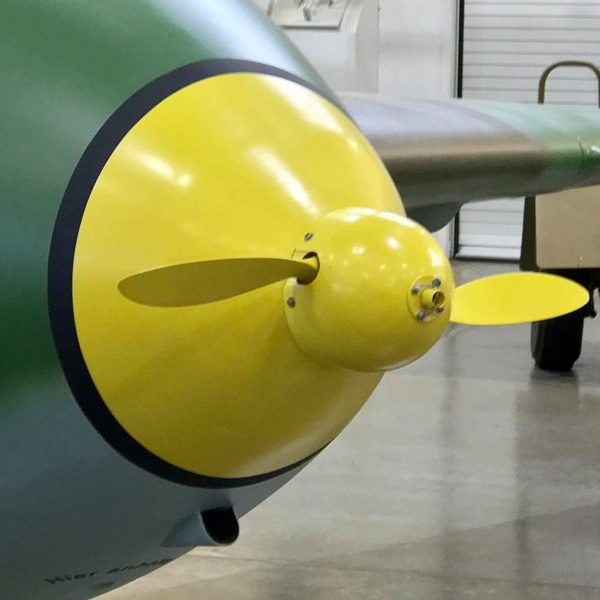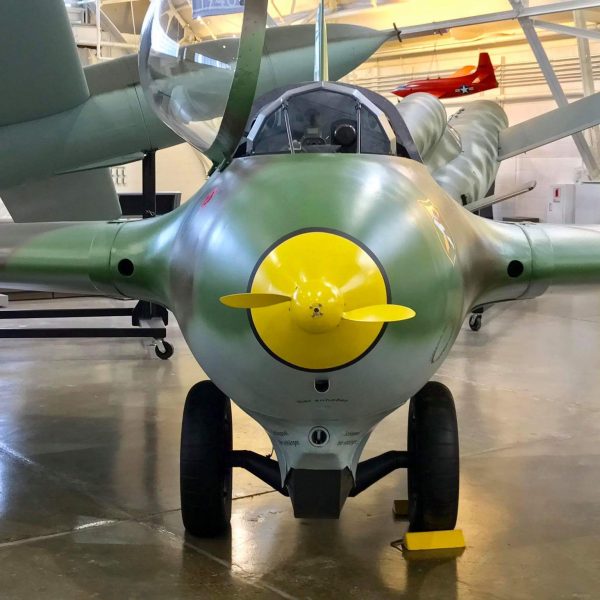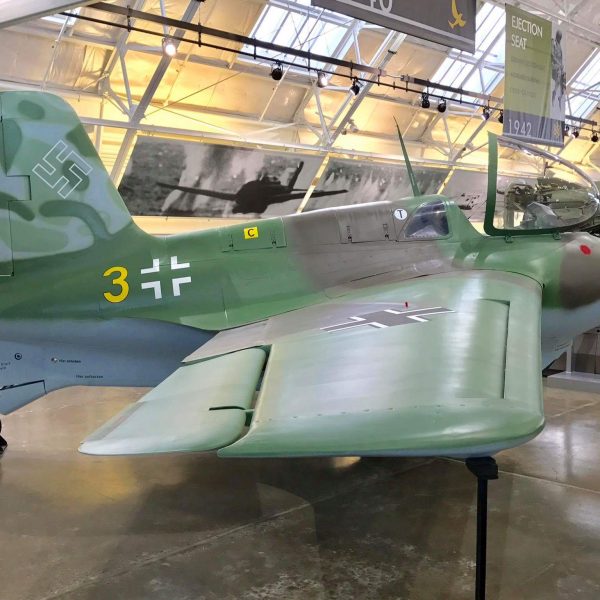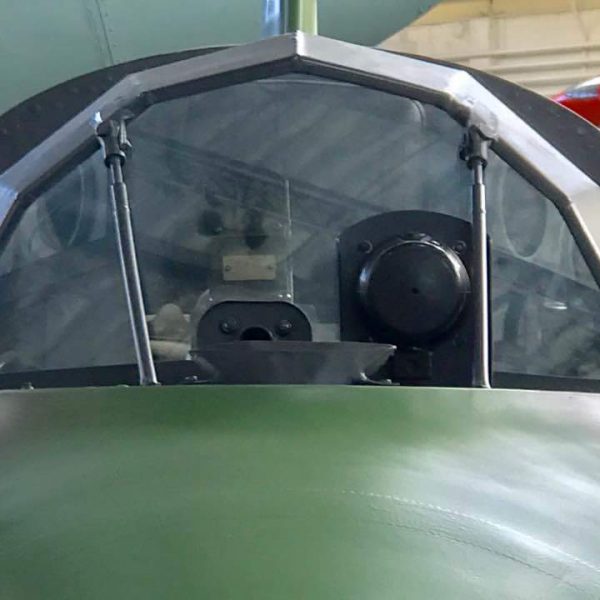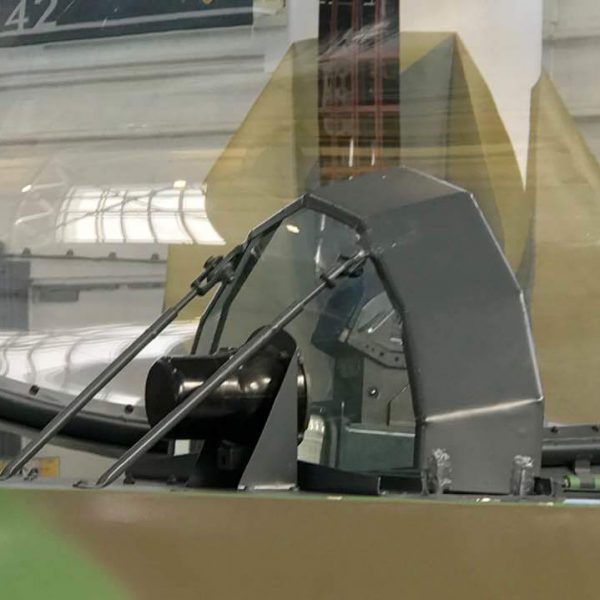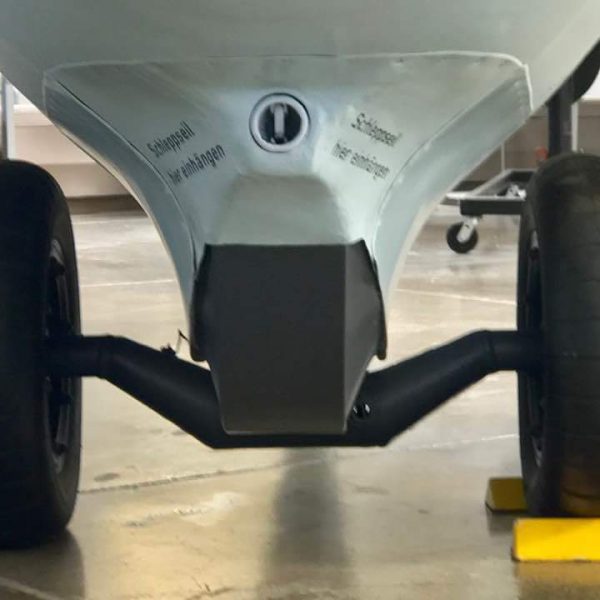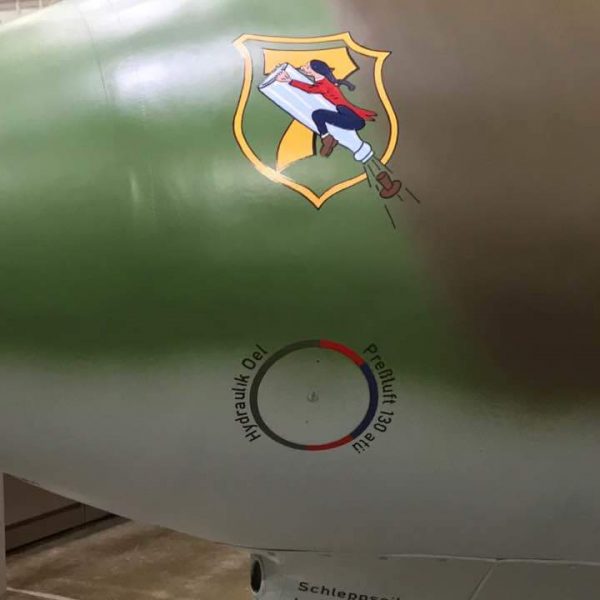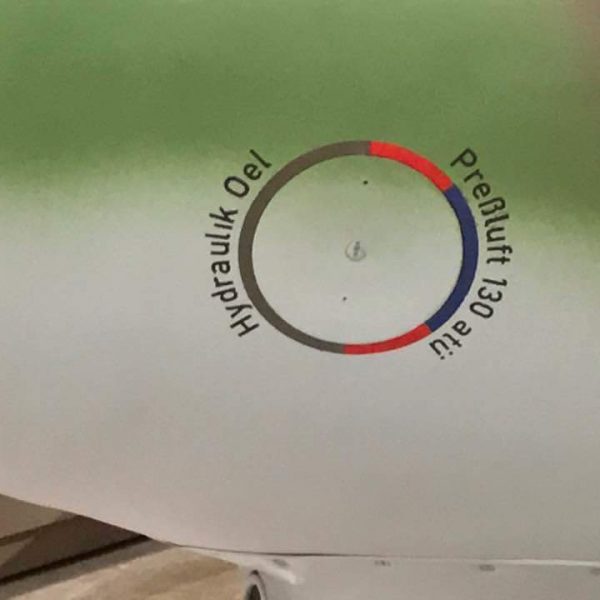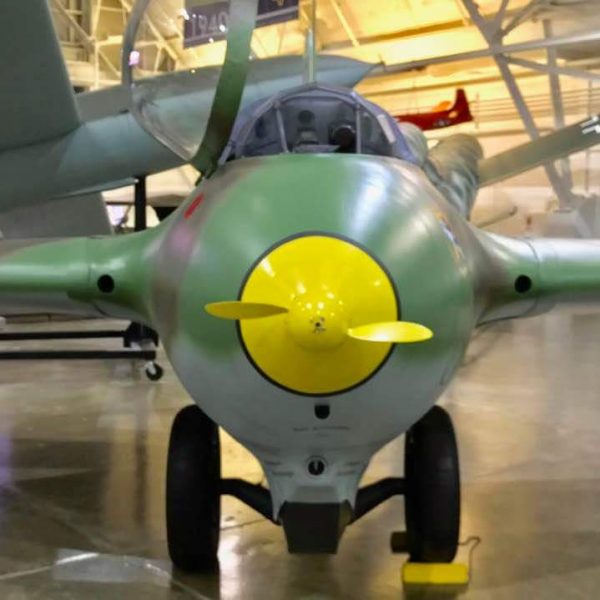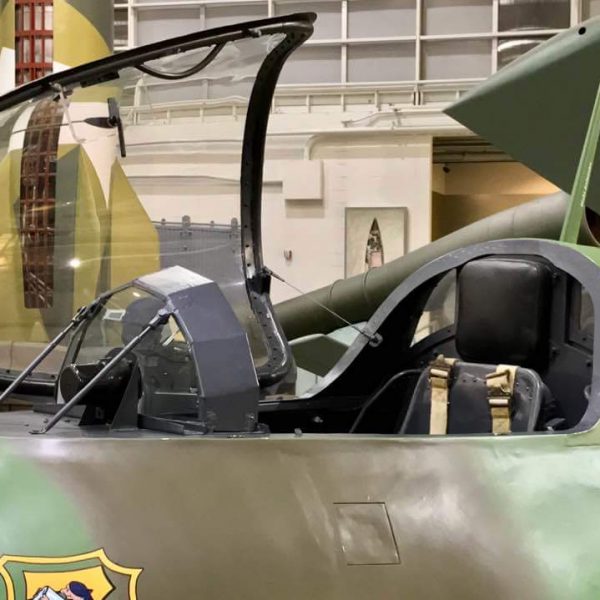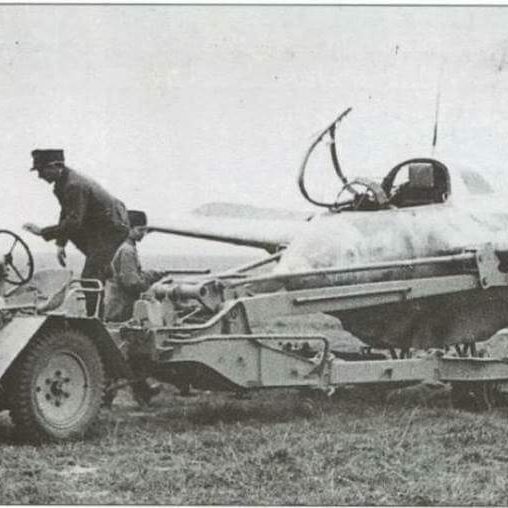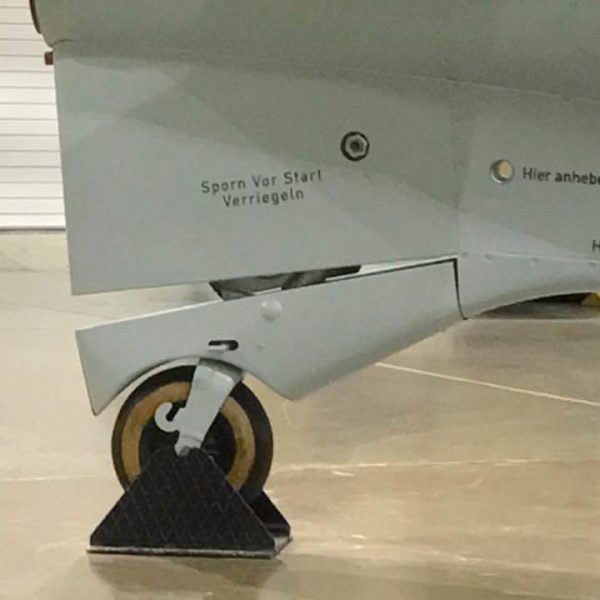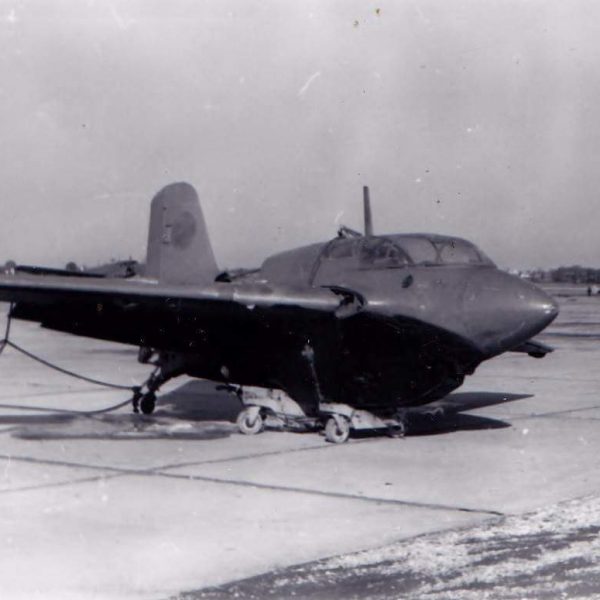Messerschmitt Me-163 B-1 Komet
The Me-163 was nIcknamed the “Kraftei“ (“Power Egg”). It was one of the first delta-wing aircraft to see combat, and one of the only rocket-propelled aircraft to see combat. Designed by Alexander Lippisch who, after World War II, became one of the scientists brought to the U.S. from Germany as part of Operation Paperclip, and even oversaw post-war testing in the U.S. (my dad was in a C-45 in Germany in 1946 that transported a couple of the scientists). The Me-163 saw limited action toward the end of World War Il. It was powered by a Walter HWK 109-509 A-1 liquid-fuel rocket motor that was fueled by the highly volatile combination of the chemicals C-stoff and T-stoff. The letters “C” and “T” were marked at the fuel tank fill points on the fuselage so as to avoid having them come into contact with each other. It was with armed a Rheinmetall Borsig MK-108 30 mm cannon in each wing. The nose cone was fitted with a small impeller which spun a generator which, in lieu of an onboard battery, powered the radio, basic avionics, gunsight, compass, cannon, and cockpit lighting. A beveled blast shield nearly 3″ thick (U.S. conversion) was fitted behind the windscreen. The aircraft was generally towed into place on the runway by a Scheuch-Schlepper fitted with (a) a tow hook with a pivoting third wheel in back, attached by four bolts to tow the Komet using a tow bar hooked onto the tow hook under the nose of the Komet when it was sitting on its starting dolly, or (b) a pair of hydraulic lifting arms with caterpillar tracks at the end (experiments with the use of inflation bags fitted under the wings of the Komet were tried with limited success). The aircraft had a fixed tail wheel and a main undercarriage of two wheels that were disengaged and dropped after takeoff, with a skid for landings. Japan purchased a license from Germany to build a version of this aircraft type – along with production rights for the accompanying Walter HKW 509A rocket engine – and it became the Mitsubishi J8M, 三菱 J8M 秋水 (“Autumn Water”, poetically “Sharp Sword” or “Sword Stroke”) rocket-propelled interceptor (see my father’s photo taken at Glenview NAS in 1946). Attempts to ship airframes of the Me-163 aboard both Japanese and German submarines were unsuccessful: Japanese submarine RO-501 “Satsuki” set sail from Kiel, Germany, on March 30, 1944 and was sunk by depth charges from the USS Francis Robinson south of the Azores on May 13 (it is still there); and I-29 “Matsu” set sail from Lorient, France on April 16, 1944 and made it as far as Singapore. Another shipment was sent from Bergen, Norway on February 5, 1945 aboard German U-864 but this was torpedoed on February 9 by the HMS Venturer, a British submarine. As a result, Japan never received a Komet airframe, so Mitsubishi reverse-engineered the aircraft based on reference materials received.
The Scheuch-Schlepper (“Schlepper” means tug) was used to tow the Messerschmitt Me-163 Komet and the Fieseler Fi-103 “V-1” Vergeltungswaffe. It was originally designed by Rudolf and Eugen Scheuch in cooperation with DKW-Einbau-Motoren, and built by Scheuch GmbH as a simple machine for hauling agricultural equipment. The Scheuch-Schlepper could be used in two basic configurations: (1) with a pivoting third wheel in back, attached by four bolts to tow the Komet using a tow bar hooked onto the tow hook under the nose of the Komet when it was sitting on its starting dolly, or (2) by removing the third wheel by releasing the four bolts and attaching a pair of hydraulic lifting arms with caterpillar tracks at the end of each arm for use as a recovery vehicle for landed Komets and for towing V-1’s. Experiments with the use of inflation bags fitted under the wings of the Komet were tried, but the lifting arms were more successful, and the round receiver can be seen at the back of the vehicle and in front of the third wheel. A second steering wheel was available to be operated by a walking ground crewman (the Scheuch-Schlepper could be more easily maneuvered under the wing of an aircraft). The throttle and clutch were hand-operated. It was powered by a 300 cc or 450 cc engine built by DKW-Einbau-Motoren and was started by a hand crank on the side of the engine cover since there was no starter motor on the standard Scheuch-Schlepper.

